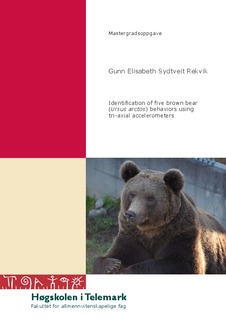| dc.description.abstract | Bio-logging as a technique for studying animal behavior is a growing field, and small devices, such as tri-axial accelerometers, reveal a more complex picture of an animal's behavior and ecology. This is particularly important for shy or elusive species that are hard to observe in the wild. Tri-axial accelerometers have been successfully deployed on a range of animal species, however studies on large carnivores are rare. Here I investigated the suitability of using tri-axial accelerometers for detecting behaviors in brown bears (Ursus arctos). I also investigated if lowering the sampling frequency of the accelerometers from 40 Hz to 20 Hz, 10 Hz and 5 Hz, had an effect on the detection of behaviors. By using lower sampling frequency, it will reduce the amount of data collected and can have an impact of the batteries lifetime. Two captive bears were equipped with the accelerometer units attached to a collar. These collars stayed on for 14 days during which the bears were videotaped to be able to correlate behaviors with the acceleration data. Five behaviors were investigated: sleeping, standing, walking, feeding, and tree-rubbing. A random forest model for classifying these five behaviors by using data sets sampled with the four different sampling frequencies showed high accuracy (93-94%) in all frequencies. Thus, I concluded that this method is useful for studying animal behavior and is suitable for use on a wide range of animals, especially species that are elusive, forest dwelling, or those that move great distances (such as many large carnivore species). | |
